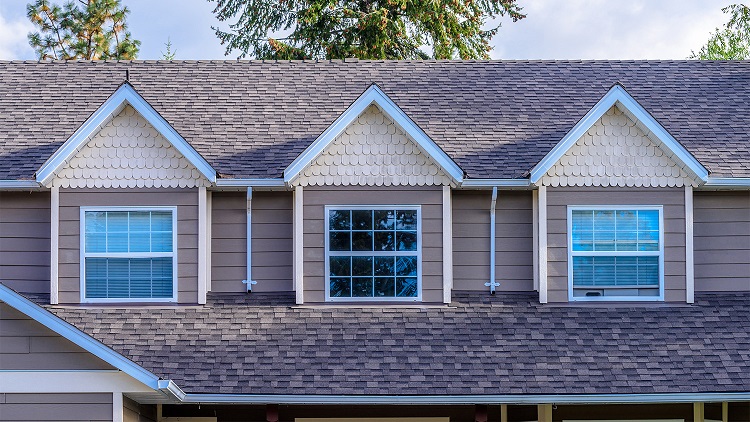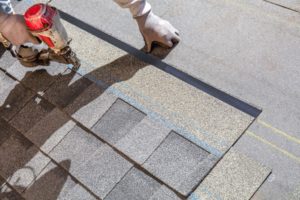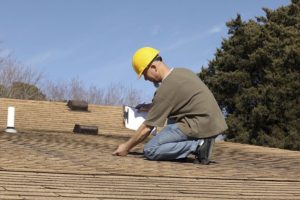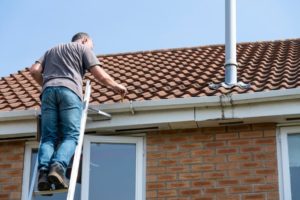The roof over your head helps to keep your home safe, comfortable, and dry, and installing roofing systems that are energy efficient is vital to keep the temperature under control and reduce the burden on your cooling system.
In our previous post, we discussed the 7 benefits of an energy-efficient roof, how it can reduce energy bills, qualify you for tax credits, and other important benefits you will get from having an energy-efficient roof. However, If you’re worried about your roof efficiency and you don’t know the best type of energy-efficient roof to go for—we’ve rounded up some of the best types of energy-efficient roof you can go with.
7 Types of Energy-Efficient Roofs
1. Cool Roofing
A cool roof is one of the most popular energy-efficient roofing types as it proposes an affordable approach to improving roof energy efficiency for flat-roofed buildings. You don’t necessarily need an outright replacement of your old roof if it is still in perfect shape, all you need is to coat your existing roof with a cool roof coating which will help to reduce up to 30% of your cooling cost. Cool roofs are typically covered with a white membrane or reflective coating which reflects more sunlight than a conventional roof. This can save energy and money in buildings with air conditioning, or improve comfort and safety in buildings without air conditioning.
However, before you go ahead to coat your existing roof with a cool roof coating, you have to consider your climatic condition. Cool roofing is great for warmer climates due to its reflective properties, but not so great in colder climates as it can hardly keep out the cold.
Is also important to consider how sloped your roof is as the bright white color in cool roofing can compromise curb appeal in most cases for sloped roofs, but is more suitable for low-sloped roofs.
2. Asphalt Shingles Roofing
Asphalt Shingles Roofing is one of the most cost-effective roofing systems on the market today and is also one of the easiest types of roofing systems to install and requires little maintenance. When choosing the most energy-efficient asphalt shingles, you’ll want to go with coated granules for your asphalt shingles. This special coating reduces heat absorption and increases how reflective the asphalt is.
You should bear in mind that most shingles do not feature these coated granules, so always look out for products that include them or at least, meet the energy-efficiency standards.
3. Metal Roofing
Metal roofs cost more than asphalt shingles but can last up to 4 times longer. They have proven that they can last up to 80 years when properly installed and they also provide excellent resistance to wind and nasty weather. They are very easy to install and are available in colors and styles to suit just about every taste.
Beyond its amazing features, metal roofs also have impressive energy-saving capabilities. Lighter colors and vented metal roofing installation can save you up to 25 percent in energy costs and installing a qualified energy-efficient metal roof can also earn you tax credits.
4. Tile Roofing
Tile roof is another roofing system that typically enjoys a very long lifespan just like the metal roof. Though tile roofs do not suit every homeowner, however, it’s a good investment from the longevity standpoint, as well as from the energy-efficiency perspective.
Tile roof’s perfect insulation fosters energy efficiency. As roofing tiles overlap with each course, air can easily circulate under the tiles themselves. This helps to conserve energy during cold and warm weather.
5. Shake Roofing
Shake roofing are very durable and can withstand strong winds and sudden storms with little damage. They are one of the most popular and effective energy-efficient roofs on the market. They create an energy-efficient roof as they allow better air circulation in a home.
6. Solar Shingle Roofing
Like regular roof shingles, solar shingles protect your home from the weather and other elements. It is cost-effective if you are building a new roof, and is easier to maintain than solar panels. These shingles are not only energy-efficient but also improve your home’s aesthetic appeal than having large black panels attached to the roof.
Beyond its energy-efficiency capabilities, solar shingles have proven to be more durable, can stand up to harsh weather conditions, and are fire-resistant, unlike solar panels.
7. Green Roofing
Green roof can improve the insulation properties of a building, hence reducing annual energy consumption. Not only are green roofs energy-efficient, but once they are installed, they can last longer than conventional roofs.
From an energy-efficiency standpoint, Green roofs reduce the heat flux through the roof, and less energy for cooling or heating can lead to significant cost savings. In winter, the green roof minimizes heat loss through added insulation on the roof which keeps the building more comfortable.
Many studies have shown that green roofs can offer amazing energy benefits in winter heating reduction as well as summer cooling.
Conclusion
When looking for the most energy-efficient roof, it is vital to choose one that is ideal for your home or office building. You have to consider your climate, environment, and several other factors like determining whether the energy savings and other benefits of an energy-efficient roof will justify the cost premium (if any).
This can best be handled by consulting the roofing experts at Austin RoofRoyale. With a team of highly trained, experienced roofers, the professionals at RoofRoyale can recommend the best energy-efficient roofing type for you. Give us a call for any inquiry or schedule a free consultation with us.






